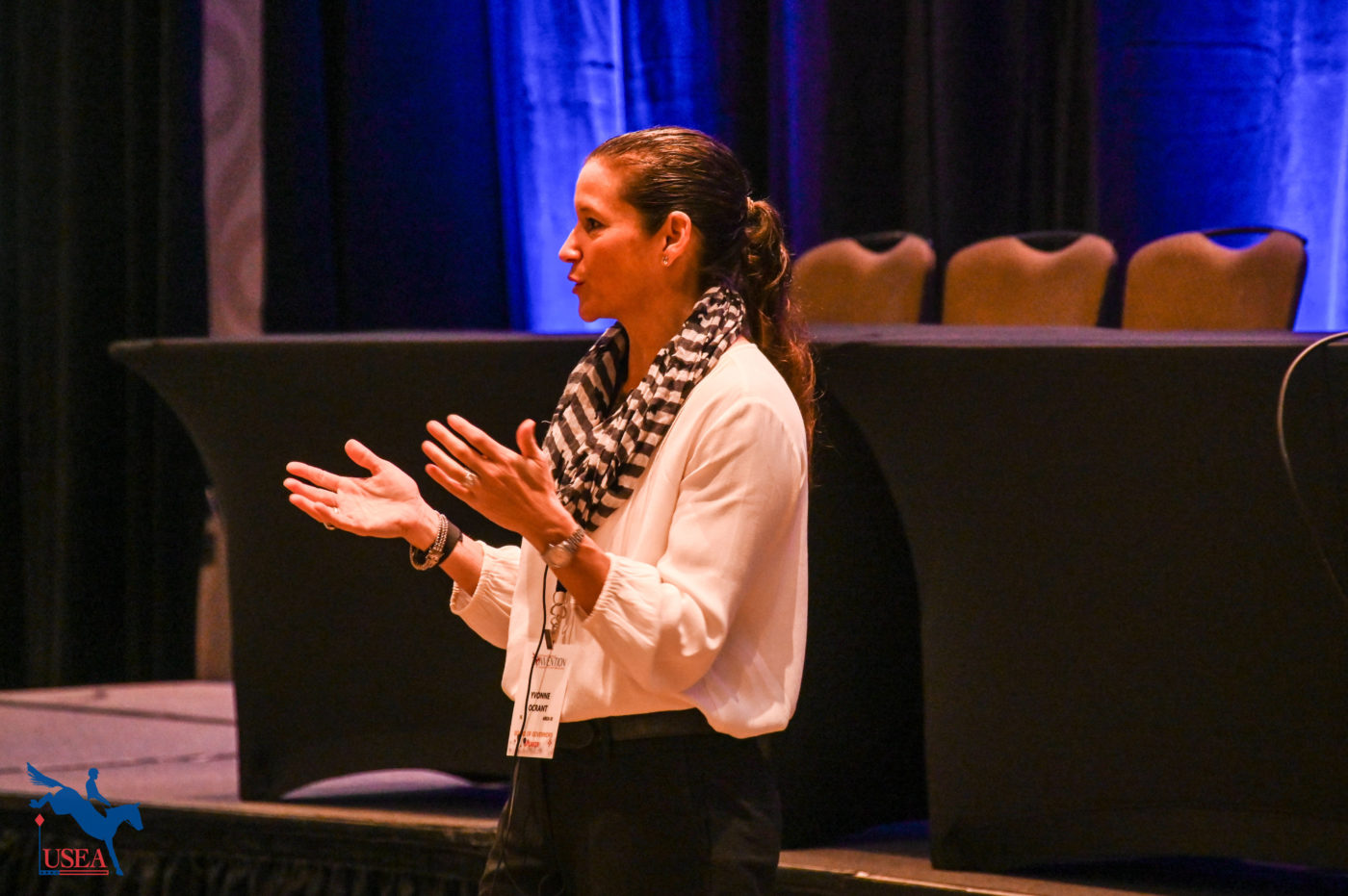

Attendees of the 2021 USEA Annual Meeting & Convention had the opportunity to sit in on two sessions regarding common equine law practices with attorney Yvonne Ocrant, USEA Board of Governors member and partner and equine law activity specialist at Hinshaw & Culbertson LLP. Ocrant’s final session of the weekend “Understanding Equine Liability and Minimizing Risk of Exposure,” educated USEA members on common equine liability risks and protocols that can be implemented to reduce risk. Here are top-five takeaways from the session for horse lovers of every nature:
5) There are 48 states which offer equine liability protection.
Not included are California and Maryland. Under this standard equine liability protection, most states have adopted the mentality that equine activities are inherently dangerous and shifts responsibility to participants in equine activities. Verbiage and regulations vary by state but, there are exceptions!
4) How to classify an individual as a participant?
As outlined above, most states' legislation shifts the responsibility of the inherent risk associated with equine activities on ‘the participant.’ But who is considered the participant in each case?
In most states, those defined as a spectator or passerby are not always covered by the state-offered equine liability protection. A good example would be a mom walking into a crowded warmup arena to reset a warmup fence who is hurt by an oncoming horse.
How can we mitigate this risk? Everyone who enters the property signs a waiver specifically created for your farm and/or show. Also, place your state’s equine liability sign at the front of your driveway, so everyone who enters the property sees it as they enter the facility.
3) What is defined as an equine activity?
Certain states might see things such as leading a horse into a trailer as a “horse trailering activity” rather than an “equine activity.” Know the laws for your state and have your liability waiver customized to fit your barn’s needs. Will riders be bringing horses up from the pasture? Judges may not see that as an “equine activity” as defined by law.
2) There are exceptions to liability!
Faulty tack or equipment can place you in the hot seat. Be sure if you are providing tack or equipment to students that it is being properly evaluated and cared for frequently.
1) Know the four reasons why your liability protection may not actually protect you:
We don't call it the "happiest horse trial in the world" for no reason, and the first day of competition at the 2025 USEA Intercollegiate & Interscholastic Eventing Championships proved just that. Those competing in the Advanced, Intermediate, Preliminary, Modified, and Training divisions got their first day of competition started as they executed their dressage and show jumping tests. Their teammates in the remaining divisions will get to experience the thrill of the show ring starting tomorrow, but all Intercollegiate and Interscholastic competitors had the opportunity to participate in this afternoon's parade of teams to give everyone a taste of their school spirit!
The United States Equestrian Team (USET) Foundation announced that the 2025 Jacqueline B. Mars National Competition and Training Grant was awarded to eventer James Alliston of San Ramon, California.
The USEA Executive Committee has approved an important update to the qualification criteria for the 2025 USEA American Eventing Championships (AEC), presented by Nutrena Feeds. This update expands the placing qualifications across the Starter through Preliminary levels.
Are you following along with the action from home this weekend? Or maybe you're competing at an event and need information fast. Either way, we’ve got you covered!